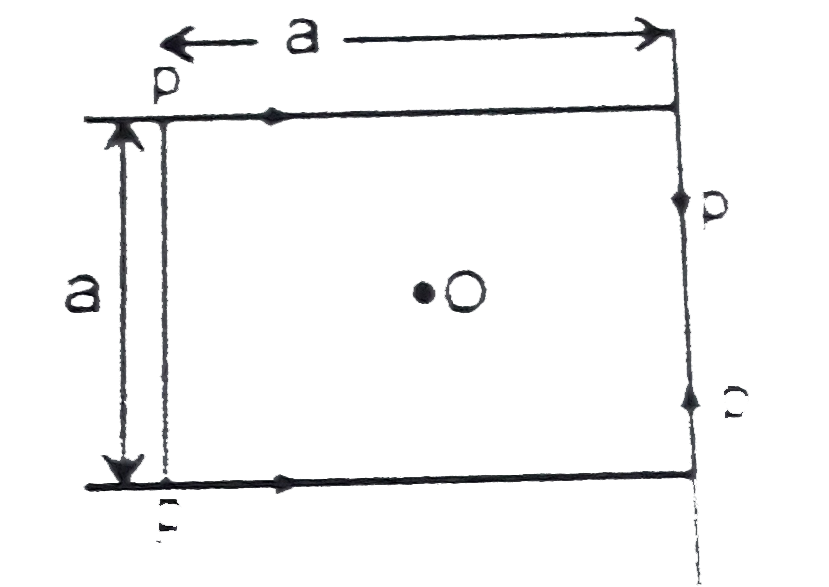Dipole moment is shown by
1,4-dichlorobenzene
cis-1,2-dichloroethene
trans-1, 2-dicholroethene
trans-2,3-dichloro-2-pentene
To determine which of the given compounds has a dipole moment, we need to analyze the molecular structures and the arrangement of the polar bonds in each compound. Here's a step-by-step solution:
Step 1: Analyze 1,4-Dichlorobenzene
1. Structure: The structure consists of a benzene ring with two chlorine atoms attached at the 1 and 4 positions (para position).
2. Polarity: The two Cl atoms are symmetrically placed opposite each other. The dipole moments from each Cl cancel each other out.
3. Conclusion: The dipole moment is 0.
Step 2: Analyze 1,2-Dichloroethene (Cis)
1. Structure: The structure consists of a double bond between two carbon atoms, with Cl atoms on the same side (cis configuration).
2. Polarity: The Cl atoms create a net dipole moment because they are on the same side, leading to an unequal distribution of charge.
3. Conclusion: The dipole moment is not 0.
Step 3: Analyze 1,2-Dichloroethene (Trans)
1. Structure: The structure consists of a double bond between two carbon atoms, with Cl atoms on opposite sides (trans configuration).
2. Polarity: The dipole moments from the two Cl atoms cancel each other out due to their opposite positions.
3. Conclusion: The dipole moment is 0.
Step 4: Analyze Trans-2,3-Dichloro-2-pentene
1. Structure: The structure consists of a double bond between the second and third carbon atoms, with Cl atoms on opposite sides.
2. Polarity: Similar to the trans-1,2-dichloroethene, the dipole moments from the two Cl atoms cancel each other out.
3. Conclusion: The dipole moment is 0.
Final Conclusion
Among the compounds analyzed, only 1,2-dichloroethene (cis) has a non-zero dipole moment due to the arrangement of the chlorine atoms.
Summary of Results
- 1,4-Dichlorobenzene: Dipole moment = 0
- 1,2-Dichloroethene (cis): Dipole moment ≠ 0
- 1,2-Dichloroethene (trans): Dipole moment = 0
- Trans-2,3-Dichloro-2-pentene: Dipole moment = 0
1. Structure: The structure consists of a benzene ring with two chlorine atoms attached at the 1 and 4 positions (para position).
2. Polarity: The two Cl atoms are symmetrically placed opposite each other. The dipole moments from each Cl cancel each other out.
3. Conclusion: The dipole moment is 0.
1. Structure: The structure consists of a double bond between two carbon atoms, with Cl atoms on the same side (cis configuration).
2. Polarity: The Cl atoms create a net dipole moment because they are on the same side, leading to an unequal distribution of charge.
3. Conclusion: The dipole moment is not 0.
1. Structure: The structure consists of a double bond between two carbon atoms, with Cl atoms on opposite sides (trans configuration).
2. Polarity: The dipole moments from the two Cl atoms cancel each other out due to their opposite positions.
3. Conclusion: The dipole moment is 0.
1. Structure: The structure consists of a double bond between the second and third carbon atoms, with Cl atoms on opposite sides.
2. Polarity: Similar to the trans-1,2-dichloroethene, the dipole moments from the two Cl atoms cancel each other out.
3. Conclusion: The dipole moment is 0.
Among the compounds analyzed, only 1,2-dichloroethene (cis) has a non-zero dipole moment due to the arrangement of the chlorine atoms.
- 1,4-Dichlorobenzene: Dipole moment = 0
- 1,2-Dichloroethene (cis): Dipole moment ≠ 0
- 1,2-Dichloroethene (trans): Dipole moment = 0
- Trans-2,3-Dichloro-2-pentene: Dipole moment = 0
Similar Questions
Four short dipoles each of dipole moment 'p' are placed at the vertices of a square of side a. The direction of the dipole moments are shown in the figure.
 View Solution
View SolutionIn which of the following molecules μexp (observed dipole moment) is found to be greater than μμ (expected dipole moment)?
View Solution
A point charge +Q is placed at a distance r from a short dipole of dipole moment →p as shown in figure. The line joining the point charge Q to the centre dipole is perpendicular to dipole moment →p, which of the following statement are true?View SolutionDipole moment of
 is 1.1 D hence dipole moment of given compound will be
is 1.1 D hence dipole moment of given compound will be
 View Solution
View SolutionZero dipole moment is present in
View SolutionThe dipole moment is zero for the compound
View SolutionPolar covalent molecules exhibit dipole moment. Dipole moment is equal to the product of charge separation , q and the bond length d for the bond. Unit of dipole moment is debye. One debye is equal to 10−18 esu cm.
Dipole moments is a vector quantity. It has both magnitude and direction. Hence, dipole moment of a molecule depends upon the relative orientation of the bond dipoles, but not on the polarity of bonds alone. A symmetrical structure shows zero dipole moment. Thus, dipole moment helps to predict the geometry of a molecules. Dipole moment values can be distinguish between cis- and trans- isomers, ortho, meta and pare-forms of a substance, etc.
Q. Which is a polar molecule?View SolutionPolar covalent molecules exhibit dipole moment. Dipole moment is equal to the product of charge separation , q and the bond length d for the bond. Unit of dipole moment is debye. One debye is equal to 10−18 esu cm.
Dipole moments is a vector quantity. It has both magnitude and direction. Hence, dipole moment of a molecule depends upon the relative orientation of the bond dipoles, but not on the polarity of bonds alone. A symmetrical structure shows zero dipole moment. Thus, dipole moment helps to predict the geometry of a molecules. Dipole moment values can be distinguish between cis- and trans- isomers, ortho, meta and pare-forms of a substance, etc.
Q. Which is a polar molecule?View SolutionAssertion : All diatomic molecules with polar bond have dipole moment.
Reason : Dipole moment is a vector quantity.View SolutionAssertion : All diatomic molecules with polar bond have dipole moment.
Reason : Dipole moment is a vector quantity.View Solution

